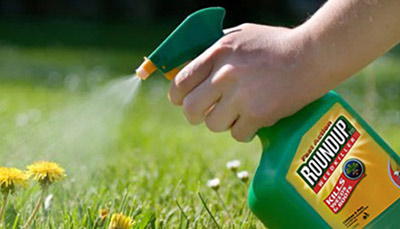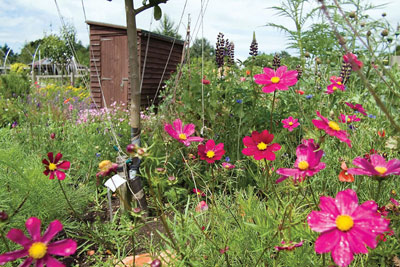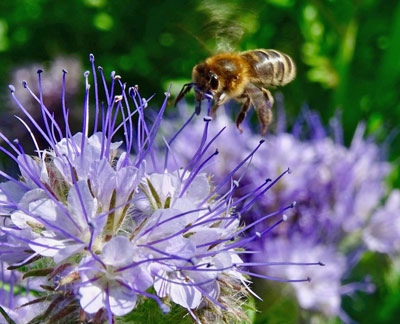 |
|
Dear Plot Holder,
The Allotment Office recently gave us a figure for the amount of donations received from plot holders during the last round of bills. As you will remember we suggested that those plot holders who were able to, should consider making a voluntary donation over and above their rent. In doing this they would be supporting those plot holders who would find it hard to manage a large rent rise.
I am pleased to tell you that this initiative raised just over £6000! Can I say, on behalf of the BHAF Committee and plot holders across the city, thank you very much to all those that donated. £6000 is an huge amount and reduces the allotment 'deficit' substantially. The system by which we could collect these donations was not perfect and without the constraints we had to work with the amount may have been even more! Glyphosate / RoundUp Discussion
On the 23rd Jan, Site Reps and Allotment Association Committee members had a discussion on the proposal to stop Glyphosate use on allotments. Notes from the meeting can be seen here. The majority of those attending were in favour of a ban on it's use.
It also appears that a majority of plot holders would like a ban but there is a significant minority that do not think a ban is appropriate. The allotment office were also not in favour of imposing a ban.
The reasons put forward were that it is a legal product which some people, perhaps elderly and less fit people, rely on to keep weeds at bay. A big problem for the site reps present at the meeting who did not want a ban on its use, was that they felt it would be impossible to enforce a ban anyway. There are other products and mixtures which will kill plants and how would a site rep know if it was definitely glyphosate which was used? It was suggested that it would be impossible to ‘police’.  However there was agreement that careless use of glyphosate, or any other weedkiller which affected neighbouring plots should definitely be curtailed. It was agreed that there should be something included in the rules to this effect, and BHAF will work on this. Meanwhile, until glyphosate is banned by the govenrment, (and it seems increasingly likely it will be) we will continue to try and increase awareness of the dangers of it’s use. Not just the possible personal health issues of using it on your own plots but also of the serious negative effects to the wider environment and bio diversity which allotments provide. BHAF will continue to promote organic gardening, over 80% of plot holders actively minimise the use of chemicals and aim for organic growing methods, and we would like to see that increase even further Below are some organic methods of weed control put together by Jenni Cresswell from Brighton and Hove Organic Gardening Group (BHOGG) Mark Carroll Chairperson BHAF Brighton and Hove Organic Gardeners Group
Weed control without the use of herbicides So, you’ve finally got to the top of the allotment waiting list and been given your long dreamed of plot. You arrive seeds in hand raring to go, but the whole place is covered in weeds. Is your first thought to reach for the Round Up? STOP!! There is another way – the organic way. Inheriting a plot that has been neglected and allowed to become covered with annual and perennial weeds can be very disheartening, as can the similarly disappointing, but self-inflicted situation of missing a few weeks up the plot for one reason or another and returning to semi-jungle conditions. We’ve all been there, and the temptation can be to ignore it, eventually leading to us giving up the plot. However, with a little bit of hard work initially, an organic approach can help you maintain a mostly weed-free plot without using any man-made chemicals. The time of year dictates how much initial work you will have to put in. Late winter or early spring is good time to make a start, as annual weeds will have died back over winter and root systems of more pernicious weeds will be dormant or weaker.  The first step is unavoidable manual work. Clear the worst of tall growth with shears, loppers and billhooks. Or, if you are able to borrow a strimmer, this can really help make a swift job of it. In fact, an electric strimmer may be a worthwhile investment, particularly if you are planning on keeping grass paths or a lawn area on the plot. This is also a good time to decide on a plan of where you want your vegetable beds to be, adding broad paths between them plus a wild area where you can let the weeds run riot to provide much needed habitats for beneficial wildlife. It is worth digging out any obvious perennial weed issues (such as bramble). Every piece of weed root removed at this stage will be one less future weeding job. If you feel tempted to let machinery take the strain and rotavate the plot, a word of advice, this will simply chop up any perennial weed roots into smaller pieces and distribute them throughout the soil, meaning a healthy crop of weeds next year! You then need to cover the soil (mulch). This effectively shades out weeds, protects the soil and the microorganisms from excessive sun and rain and provides a microclimate for those organisms to break down the mulch so you have a perfect planting environment for your seedlings later on. There are multiple materials for achieving this, and you may want to do some research on what works best for you. The topic of mulching is an immense one and would need its own article, however there are some excellent sites out there including those promoting other gardening principles that are synergistic with organic growing such as ‘no dig’ systems and permaculture. Ones to visit include: Charles Dowding Joshua the Gardener Garden Organic Brighton Permaculture Trust My favourite method is to apply a mulch of compost or manure and then cover with large pieces of cardboard weighted down with wood or stones. I tend to peel back any remaining cardboard before planting, but it is entirely possible to plant through any mulch, layering up in a compost and cardboard ‘sandwich’ and continuing to benefit from the weeds being shaded out.  Once you have removed the worst offenders and covered the plot, you shouldn’t have to do too much to maintain it. You can continue to cover empty beds with a mulch, or perhaps more usefully use them to grow overwintering crops (such as brassicas, leeks, autumn sown onions, autumn sown broad beans) or to try out the dizzying range of green manures. These plants add nitrogen to the soil either by fixing it with their roots (leguminous plants) or by being incorporated into the soil by hoeing in. Again, look online for what suits your soil’s needs the best. Phacelia grows particularly well on our chalky soil, and if you leave a small patch to flower the bees absolutely love it! https://www.gardenorganic.org.uk/green-manures Evidence shows that it is much more healthy for the soil and its trillions of microorganisms to have plants growing in it. And this is true even if the plants happen to be weeds to us. The next best thing is to cover the soil with a mulch rather than leaving the soil bare. Supporting your soil is at the heart of organic gardening. Check out our ‘at a glance’ table of the best weed-busting methods. Jenni Cresswell Chairperson BHOGG https://bhorganicgardeninggroup.org/ What to do on your allotment in March?
Doctors now prescribing allotments! City bees: allotments and gardens can help arrest decline Can we ditch intensive farming and still feed the world?
https://www.theguardian.com/news/2019/jan/28/can-we-ditch-intensive-farming-and-still-feed-the-world
Plot holders are most welcome to upload pages to our website. Just go to our site, and go to 'add you story' It's really easy to do!
|
